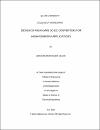Design of High-Gain DC-DC Converters for High-Power PV Applications
| Advisor | Massoud, Ahmed |
| Author | Alassi, Abdulrahman |
| Available date | 2016-12-08T11:02:51Z |
| Publication Date | 2016 |
| Abstract | Renewable energy sources are penetrating the market in an ever increasing rate, especially in terms of Wind and Solar energies, with the latter being more suitable for the GCC region. Typically, Photovoltaic (PV) strings’ output voltage is limited to ~ 1500 V due to safety constraints, and thus requires boosting to higher DC levels (non-isolated step-up DC-DC transformer) suitable for High-Voltage DC (HVDC) and AC grid applications in order to provide the required DC-Link voltage level. Nevertheless, conventional non-isolated DC-DC converters provide a limited practical gain due to their parasitic elements. Other options include isolated DC-DC converters that utilize costly high-frequency transformers with limited power capability. Moreover, the isolation requirements of transformers in HVDC significantly increase the footprint of the converters. High-frequency transformers for high-power applications are hard to design and are usually associated with higher losses. Alternatively, connecting conventional DC-DC converters in different combinations can provide higher gains to the required levels, while maintaining the high efficiency requirements. This thesis proposes the cascade and/or series connection of DC-DC modules as a solution to the high-conversion ratio requirement, based on Cuk and Single-Ended Primary Inductor Converter (SEPIC) topologies, whose continuous input current is suitable for PV applications, and reduces the bulky capacitor filters at the input side. Detailed theoretical models of the proposed topologies are first derived, then their trends are practically verified by low power prototypes. Sensitivity analysis is also performed to assess the effect of small variations to the parasitic inductors’ resistances on the overall system gain, where the input inductor is found to have a considerable effect, especially at higher duty ratios (i.e. higher gains). High-power applications’ scenarios with their considerations are simulated to compare the different topologies and the results show a comparable efficiency of the proposed converters for a 1 –MW application with efficiencies higher than 90%. |
| Language | en |
| Subject | Cascaded/Series Connections Cuk Converter High Gain DC-DC Converters High-Power PV Applications HVDC Transmission SEPIC Converter Electrical engineering Engineering |
| Type | Master Thesis |
| Department | Electrical Engineering |
Files in this item
This item appears in the following Collection(s)
-
Electrical Engineering [52 items ]


